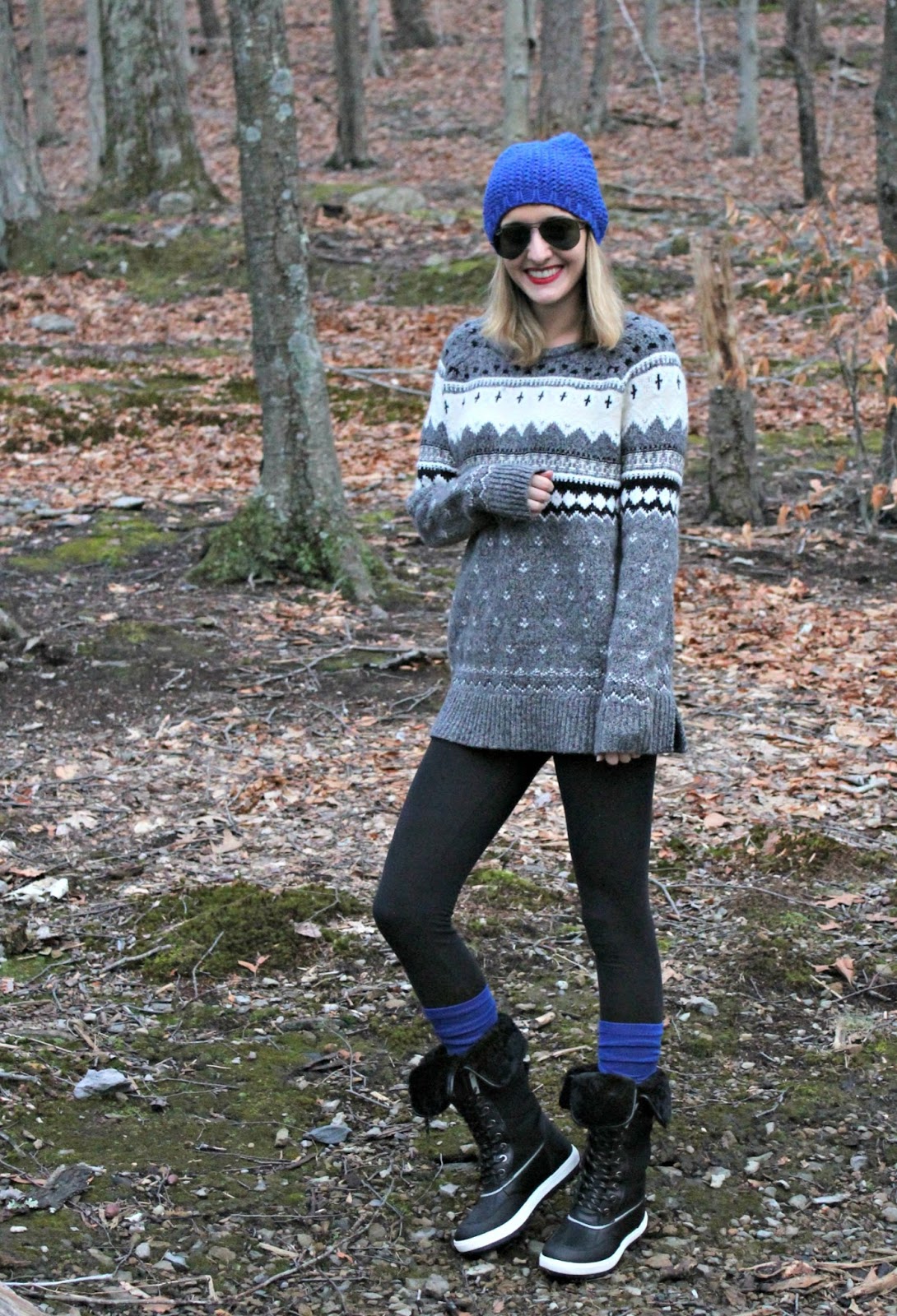Best Socks for Cold Weather
When it comes to bracing yourself for chilly temperatures, one of the most crucial yet often overlooked clothing items is a pair of warm socks. While it may seem like a small detail, the right socks can make a significant difference in keeping your feet comfortable and protected from the biting cold. In this article, we will explore the importance of warm socks, the materials used in cold weather socks, the features of high-quality options, the different types available, and how to choose the right size and fit.
Understanding the Importance of Warm Socks
Have you ever wondered why your feet tend to get colder quicker than the rest of your body? It all comes down to the role that socks play in regulating body temperature. Socks act as a protective barrier between your skin and the cold environment, helping to retain heat and prevent heat loss. Additionally, they provide insulation by trapping a layer of warm air around your feet.
But let's delve deeper into the science behind warm socks. Did you know that our feet have a higher surface area-to-volume ratio compared to other body parts? This means that they lose heat more rapidly. By wearing warm socks, you create a microclimate around your feet, reducing the rate of heat loss and keeping them comfortably warm.
Furthermore, the materials used in warm socks play a crucial role in their effectiveness. Cotton, for example, is an excellent choice for cold weather socks. It has natural insulating properties and can retain heat even when wet. This is particularly important if you engage in outdoor activities during the winter months, as wet feet can lead to a rapid drop in body temperature.
However, the importance of warm socks goes beyond just comfort. Cold feet can have various health risks associated with them. Prolonged exposure to cold temperatures can lead to reduced blood flow to the feet, increasing the risk of frostbite and other complications. By investing in quality cold weather socks, you can mitigate these risks and ensure your feet stay cozy and safe.
Moreover, warm socks can also prevent common foot problems that arise during colder seasons. For instance, dry and cracked skin is a common issue when the air is dry and cold. By wearing socks that provide moisture-wicking properties, you can keep your feet hydrated and prevent skin problems.
Additionally, wearing warm socks can improve overall circulation in your feet. When your feet are cold, blood vessels constrict, reducing blood flow. This can lead to discomfort and even pain. By keeping your feet warm with the right socks, you promote proper blood circulation, which is essential for maintaining healthy feet.
Lastly, warm socks can also enhance your athletic performance during colder months. When your feet are cold, your muscles and joints may become stiffer, affecting your agility and balance. By wearing socks that provide adequate warmth and support, you can optimize your performance and reduce the risk of injuries.
The Role of Socks in Body Temperature Regulation
To understand why warm socks are essential, it's crucial to know how they impact body temperature regulation. Our feet contain numerous blood vessels that play a vital role in maintaining thermal equilibrium. When exposed to cold temperatures, these blood vessels constrict to conserve warmth in our core area. However, this constriction also limits the blood supply to the extremities, making the feet susceptible to cold-related problems.
By wearing warm socks, we provide an added layer of insulation, reducing heat loss and helping to maintain optimal blood flow to the feet. Good thermal regulation not only keeps our feet warm but also contributes to overall comfort and well-being in cold weather conditions.
In addition to material, the thickness of the socks also affects their ability to regulate body temperature. Thicker socks provide more insulation and are ideal for extremely cold conditions. They create a cushion of warmth around the feet, preventing heat loss and ensuring comfort. On the other hand, thinner socks are suitable for milder temperatures or when wearing tight-fitting shoes.
Another important aspect to consider is the fit of the socks. Socks that are too tight can restrict blood circulation, leading to cold feet. Conversely, socks that are too loose may not provide adequate insulation. It is crucial to find socks that fit snugly but not too tight, allowing for proper blood flow while maintaining warmth.
Furthermore, the design of the socks can also contribute to their ability to regulate body temperature. Some socks feature special ventilation zones that allow excess heat and moisture to escape, preventing overheating and keeping the feet dry. These ventilation zones are strategically placed to enhance breathability without compromising insulation.
Proper care and maintenance of socks are essential for optimal body temperature regulation. Regular washing and drying of socks help maintain their insulating properties and prevent the buildup of bacteria and odor. It is recommended to follow the manufacturer's instructions for washing and drying to ensure longevity and performance.
In conclusion, warm socks play a crucial role in body temperature regulation, especially in cold weather conditions. By providing an added layer of insulation and promoting optimal blood flow to the feet, they help keep our feet warm and comfortable. Factors such as material, thickness, fit, and design all contribute to the socks' ability to regulate body temperature effectively. By choosing the right pair of socks and taking proper care of them, we can ensure maximum comfort and well-being in any weather.
Health Risks of Cold Feet
Experiencing cold feet for extended periods can lead to various health risks. Frostbite, a condition caused by freezing of body tissues, is one of the most severe consequences. Frostbite can cause permanent damage to the skin, nerves, and blood vessels in the affected areas. It is vital to protect your feet with warm socks to prevent this condition.
Moreover, prolonged exposure to cold feet can also increase the risk of developing conditions like chilblains, which are painful inflammations of the small blood vessels in the skin. Cold feet can also contribute to discomfort, numbness, and reduced mobility, making it essential to prioritize proper foot care in cold weather.
Materials Used in Cold Weather Socks
When it comes to cold weather socks, the choice of materials is crucial in determining their effectiveness. Let's explore two popular options widely used for keeping feet warm in chilly conditions: wool socks and synthetic materials.
Cotton Socks: Pros and Cons
Cotton is a natural fiber celebrated for its breathability and softness, making it a great choice for comfortable, all-season socks. Cotton fibers are proficient at wicking moisture away from the skin, keeping feet cool and dry. Additionally, cotton is gentle on the skin, which is beneficial for those with sensitive skin or who prefer a lighter, more breathable sock. It's important to recognize that cotton socks vary in quality. Seek out options made of combed cotton, as it is known for its superior softness and enhanced strength. Combed cotton socks offer excellent breathability and are suitable for a broad range of conditions, from warm days to moderate temperatures, ensuring comfort throughout the day.
Synthetic Materials: What to Look For
Synthetic materials, such as polyester and nylon blends, have gained popularity in recent years for their moisture-wicking properties and durability. These materials excel at pulling sweat away from the skin, keeping the feet dry and preventing chilling due to moisture buildup.
When choosing synthetic socks, look for those with moisture-wicking capabilities and additional features like reinforced heel and toe areas for enhanced durability. Some synthetic socks also incorporate thermal insulation technologies, providing extra warmth to combat even the coldest conditions.
Features of High-Quality Cold Weather Socks
Choosing the Right Size and Fit
When it comes to selecting cold weather socks, finding the right size and fit is essential for optimal comfort and performance.
Importance of Proper Sock Fit
A well-fitting pair of socks can make all the difference in your cold weather adventures. Socks that are too tight can restrict blood circulation and cause discomfort, while socks that are too loose can slide around, leading to friction and blisters. It is crucial to find socks that provide a snug fit without being overly constricting or sagging.
How to Measure Your Foot for Socks
If you are unsure about your sock size, here's a simple method to measure your foot for socks:
- Place a piece of paper on the floor and stand on it with your foot flat.
- Use a pen or pencil to mark the longest distance from your heel to your longest toe.
- Measure the marked length with a ruler or tape measure.
Compare your measurement with the size chart provided by the sock manufacturer to find the best size for your feet.
By investing in the best socks for cold weather, you can ensure your feet stay warm, comfortable, and protected from the elements all winter long. Whether you opt for wool socks, high-performance synthetic blends, or luxurious heated socks, prioritize insulation, moisture-wicking capabilities, and a comfortable fit. Don't let cold feet hold you back from enjoying the great outdoors in any weather – embrace warmth, comfort, and style with the perfect pair of cold weather socks.




